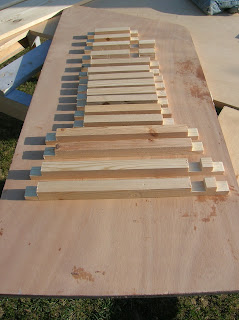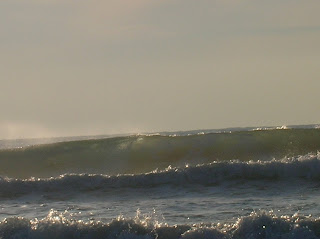 I’ve spent a few days away from the workshop. Maintaining the single-mindedness necessary to keep the build at the top of my list of priorities is hard work in itself. Especially when the larder is bare. I’m fortunate not to be so tied to the train of modern living that I can’t disembark now and again to pursue other interests. But it’s about time I hopped on again.
I’ve spent a few days away from the workshop. Maintaining the single-mindedness necessary to keep the build at the top of my list of priorities is hard work in itself. Especially when the larder is bare. I’m fortunate not to be so tied to the train of modern living that I can’t disembark now and again to pursue other interests. But it’s about time I hopped on again. To get the Trow into the top three of my priorities I’ve had to let a few things fall by the wayside. A visitor to my house would be quick to see that there’s a quantity of everyday household DIY that somebody’s obviously shirking. And I’ve seen my neighbours (Chief Vitalstatistix et al) pointing out that the plastic sheet stapled over the broken bathroom window—a temporary repair, which has been in place for two years—is somewhat lowering the tone. My churlish reply to these gossipy folk would be, “Will fixing the window get me on the water any earlier?”
I would also like to excuse myself from other responsibilities towards the upkeep of the house by mentioning that it is a building dominated by children. My case is that there’s not much point fixing things that will almost certainly get re-broken or painting walls that will soon be scribbled on or enforcing the kind of discipline that would make children quake in their shoes at the thought of defacing a door. I’m happy to give the house over to them while they’re young even if it does mean that hordes of the blighters might blow through at the weekend like a rampant marauding army. Defiling biscuit packets, spilling milk, working crumbs and other indescribable grot into unlikely places. Charging up and down stairs, upending toy boxes and uncapping felt-tip pens. Then thundering out again leaving disturbing smells and unflushed lavatories.
It’s fine by me so long as I can get on with my boat.
These pictures are from last Saturday. 

There's Bertie the belt-sander sitting smugly in the background quietly digesting the chunk he’s just taken out of the centreboard. I can’t believe the name’s stuck, it’s getting like Thomas the Tank Engine round this workshop. Soon I’ll be animating the tools on the bench and making up stories for them. Actually I think Priscilla Plane and Stuart Surform have got a little tool-box romance going on…
I won’t continue.















































